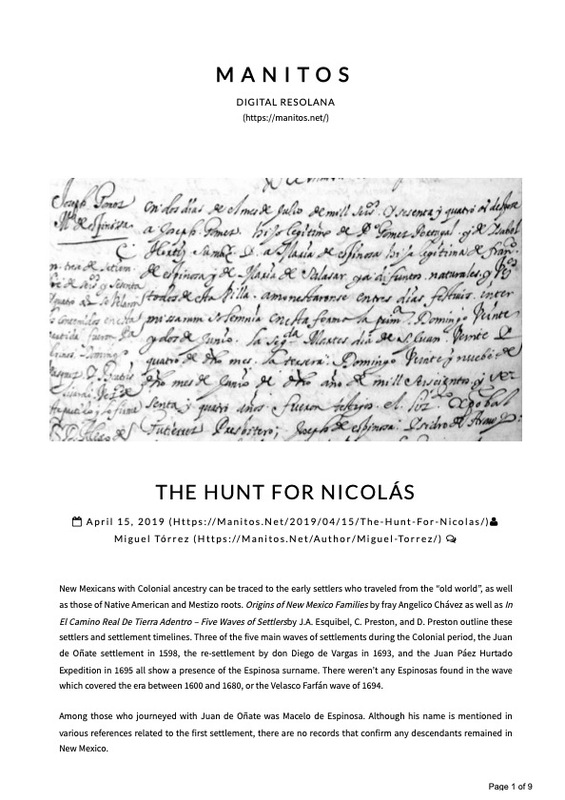The Manitos Digital Resolana was created as a virtual gathering space for manitos, as people from rural northern New Mexico and southern Colorado call themselves. In many villages throughout this region, the resolana is the sunny side of a building, where people congregate to converse and share knowledge and wisdom.
The site served as a space for people from these rural communities and their urban diasporas, where people connected to these villages now live, to reconnect, recollect, record, and reflect on their shared cultural heritage, as well as to document the progress of the Manitos Community Memory Project, an initiative to establish community-based digital cultural heritage archives grounded in the living culture of the villages of northern New Mexico and southern Colorado.
-
Memorializing the Fallen Soldiers of WWIThis essay originally appeared on the Manitos Digital Resolana, a blog site meant to reconnect, recollect, record, and reflect on the shared cultural heritage of manitos, as people from rural northern New Mexico and southern Colorado call themselves. In this entry, the effort to memorialize New Mexicans lost during World War I is discussed.
-
The Hunt for NicolásThis essay originally appeared on the Manitos Digital Resolana, a blog site meant to reconnect, recollect, record, and reflect on the shared cultural heritage of manitos, as people from rural northern New Mexico and southern Colorado call themselves. In this entry, Miguel Tórrez discusses a genealogy project he undertook in which he helped three friends with surnames Espinosa trace their family lineage. Using Y-DNA, Tórrez traced the Espinosa name back to the 1695 colonists Nicolás de Espinosa and Josefa de la Cruz, as well as the migration of the Espinoza family throughout the country.
-
Hipólito Espinosa and the Old Spanish TrailThis essay originally appeared on the Manitos Digital Resolana, a blog site meant to reconnect, recollect, record, and reflect on the shared cultural heritage of manitos, as people from rural northern New Mexico and southern Colorado call themselves. In this entry, Mary Anne Pentis and June Espinosa Rosales discuss the life of Hipólito Espinosa, their great great grandfather. Espinosa was one of the first colonists to arrive in Alta California from New Mexico via the Old Spanish Trail.
-
Recovering Ancestral DNA in AbiquiúThis essay originally appeared on the Manitos Digital Resolana, a blog site meant to reconnect, recollect, record, and reflect on the shared cultural heritage of manitos, as people from rural northern New Mexico and southern Colorado call themselves. In this entry, Miguel Tórrez, a genetic genealogist, details his time working with the Pueblo de Abiquiú on a project to offer insight into the historical and contemporary context of the genízaro using oral history and DNA.
-
Recovering Abiquiú's Lost Church RecordsThis essay originally appeared on the Manitos Digital Resolana, a blog site meant to reconnect, recollect, record, and reflect on the shared cultural heritage of manitos, as people from rural northern New Mexico and southern Colorado call themselves. In this entry, archivist Samuel Sisernos recalls how the baptismal, marriage and burial registers (1777-1861) from the Mission Church of Santo Tomás Apóstol de Abiquiú ended up at the Center for Southwest Research in Albuquerque and, following rehousing and documentation, then to the Archives of the Archdiocese of Santa Fe (AASF).




